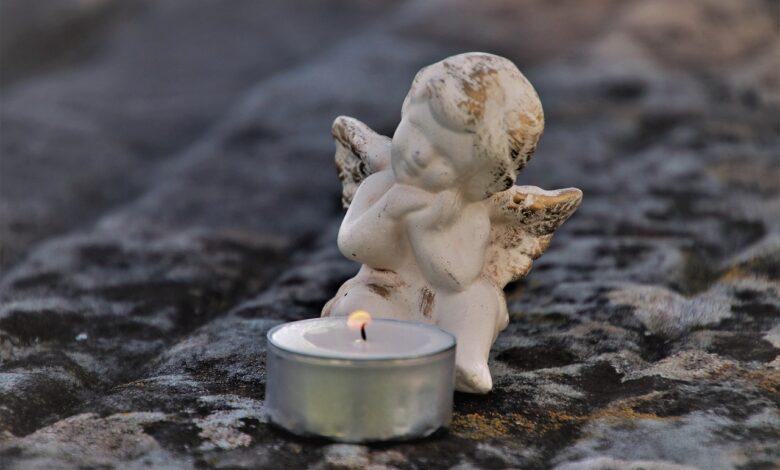Bereavement Dream Meaning and Interpretation

Bereavement unveils a universal human experience marked by profound loss and sorrow. Among the myriad facets of the grieving process, bereavement dreams emerge as an intriguing yet often underexplored realm. These nocturnal narratives extend a gateway into the subconscious, mirroring the emotional and psychological tapestry of the dreamer.
Dreams during bereavement often encompass a wide range of emotions and scenarios. They may offer a sense of closure, evoke further grief, or even foster a continuing bond with the departed. Understanding the dynamics of bereavement dreams can be an insightful journey into personal healing and acceptance. This exploration unravels through various lenses including interpretations, symbolism, common dream themes, psychological perspectives, and cultural narratives surrounding bereavement.
Interpretations of Bereavement Dreams
Dreams have always been a subject of human curiosity and interpretation. In the context of bereavement, they often carry a deeper emotional resonance, holding a mirror to the psyche of the bereaved. The realm of bereavement dreams is vast and varied, with different interpretations sprouting from individual experiences. While some find solace and messages of love in the dream sequences, others might encounter unresolved emotions or even fear. Here’s a closer look into various facets and interpretations surrounding bereavement dreams:
- Messages from the Deceased:
- Many individuals report receiving messages or guidance from their departed loved ones in dreams. This form of dream can offer comfort, closure, or sometimes directions on unresolved matters.
- Example: A bereaved spouse might dream of their deceased partner offering words of encouragement, helping them to find peace and strength in moving forward.
- Continuation of Bonds:
- Dreams can act as a conduit for maintaining a sense of connection with the departed. In such dreams, the dreamer might interact with the deceased in a familiar setting, recreating a bond that transcends the physical realm.
- Example: A person might dream about having dinner with a deceased parent, engaging in conversations and reliving moments of warmth.
- Processing Grief:
- Unresolved Issues:
- Symbolic Representations:
- Dreams often communicate through symbols. Bereavement dreams might contain symbolic elements reflecting the dreamer’s internal state or feelings regarding the loss.
- Example: A crumbling house in a dream might symbolize the perceived shattering of one’s life foundations post loss.
Each of these aspects paints a unique picture of the dreamer’s internal landscape amidst the journey of grief. By acknowledging and reflecting upon bereavement dreams, individuals can unearth layers of emotions and possibly find a pathway towards healing and acceptance. The interpretations of bereavement dreams, though deeply personal, offer a glimpse into the universal human experience of loss, grief, and the pursuit of closure. Through the veil of dreams, the bereaved may find fragments of solace, glimpses of hope, and a bridge to the healing realm where the essence of lost loved ones continues to reside in memories and love.
What is the Symbolism of Bereavement?
The experience of bereavement carries profound symbolic weight, transcending mere loss to encompass a wide spectrum of human emotions and existential contemplation. The symbolism tied to bereavement is often multilayered and can vary significantly from person to person, based on individual circumstances, cultural background, and personal beliefs. Below, we delve into some prevalent symbolic aspects associated with bereavement:
- Endings and Beginnings:
- Bereavement symbolizes an end, a finale to a shared journey with the departed. Yet, in many cultures and philosophies, it’s also seen as a beginning—be it a spiritual journey for the deceased or a new chapter of growth and self-discovery for the bereaved.
- Example: The symbolism of a closed door representing an end, and an open window signifying new beginnings can be metaphorically associated with bereavement.
- Connection and Disconnection:
- Bereavement encapsulates the duality of connection and disconnection. While the physical bond is severed, emotional and spiritual connections often continue, manifesting in memories, dreams, and legacies.
- Example: Memorial services, which honor the deceased, symbolize the enduring bond and the eternal imprint left behind.
- Transience of Life:
- The inevitability of death, highlighted through bereavement, is a stark reminder of the transience of human existence, urging reflection on the meaning and value of life.
- Example: The fleeting imagery of a sunset often symbolizes the transient nature of life.
- Transformation and Growth:
- The journey through grief can lead to profound personal transformation and growth, as individuals explore their inner depths, re-evaluate life priorities, and emerge with newfound wisdom and resilience.
- Example: The metaphor of a caterpillar transforming into a butterfly can symbolize the growth inherent in traversing through the realms of grief.
- Eternal Love:
- Bereavement often symbolizes the undying nature of love, showcasing that emotional bonds can withstand even the finality of death.
- Example: Keepsakes, photographs, and memorial tributes act as symbols of unbroken love and cherished memories.
Each of these symbolic aspects intertwined with bereavement underscores the profound impact of loss on the human psyche. The exploration of these symbolic underpinnings can foster a deeper understanding of the grieving process, potentially facilitating healing and acceptance. As individuals navigate the tapestry of symbols embedded in their bereavement experiences, they may uncover new dimensions of understanding and empathy, both for themselves and others traversing the labyrinth of loss.
Common and Typical Dreams of Bereavement
The realm of bereavement dreams is as vast as the human psyche itself, weaving through the intricacies of love, loss, and the indelible imprints left by those who have passed on. Here, we journey through some common and typical dream scenarios encountered during bereavement, each bearing its own distinct narrative and emotional hue.
- Visitation Dreams:
- Reliving Memories:
- Bereaved individuals may dream about reliving past experiences or moments with the deceased, providing a temporary respite from the pain of loss.
- Example: Dreaming about a happy family gathering that took place years ago.
- Unfinished Business:
- Dreams reflecting unresolved issues or unexpressed emotions towards the deceased, urging the dreamer to face and process these feelings.
- Example: Dreaming about an unresolved argument and finding a sense of closure within the dream.
- Distress and Nightmare:
- Distressing dreams or nightmares that reflect the emotional turmoil, fear, or anxiety surrounding the death of a loved one.
- Example: Dreaming about being unable to save the deceased from danger.
- Symbolic Dreams:
- Dreams laden with symbols representing the dreamer’s feelings or the essence of the deceased.
- Example: Dreaming of a bird flying freely, symbolizing the soul’s journey post death.
- Reunion Dreams:
- Dreams where the bereaved gets to reunite, communicate, or spend precious moments with the deceased.
- Example: Dreaming about having a heart-to-heart conversation with a departed friend.
Each of these dream scenarios reflects a facet of the grieving process, offering a glimpse into the emotional and psychological landscape of the bereaved. The narration of these dreams often oscillates between the realms of reality and transcendence, illuminating the profound human quest for connection, closure, and comprehension amidst the shadow of loss. As bereaved individuals traverse through these dream landscapes, they may encounter moments of solace, resonance, and even profound insight into the intricate tapestry of life, death, and the interlude of dreams.
Bereavement-related Dreams
Dreams embody a space where the conscious and the unconscious intersect, often revealing emotions and thoughts that are deeply nestled within the psyche. When it comes to bereavement, dreams can become a conduit for processing loss, reconciling with the finality of death, and maintaining a spiritual connection with the departed. Here are some dimensions of bereavement-related dreams:
- Healing Dreams:
- These dreams tend to offer solace and healing to the dreamer, often through comforting interactions with the deceased or through symbolic imagery that fosters acceptance and closure.
- Example: Dreaming of a peaceful garden where the bereaved and the deceased share a serene moment, possibly symbolizing acceptance and tranquility.
- Guiding Dreams:
- Sometimes the bereaved may experience dreams where the deceased offer guidance, wisdom, or resolve pending issues, helping the dreamer navigate through life challenges.
- Example: Dreaming of a deceased mentor offering advice on a difficult life decision.
- Reflective Dreams:
- Bereavement-related dreams can act as a mirror, reflecting the internal emotional and psychological state of the bereaved, often illuminating the path of grief and healing.
- Example: Dreaming of turbulent waters gradually calming, symbolizing the gradual healing process.
- Premonition Dreams:
- Although less common, some individuals report dreams that seem to carry premonitions or messages regarding future events or insights concerning the deceased.
- Example: Dreaming about a specific location, only to later discover it was a place significant to the deceased.
- Shared Dreams:
- In rare instances, multiple individuals may share a similar dream about the deceased, creating a shared experience of bereavement and spiritual connection.
- Example: Siblings dreaming of spending a day with their deceased father, experiencing a shared narrative of love and remembrance.
- Life Review Dreams:
- These dreams may encapsulate a review of the life shared with the deceased, allowing for a re-exploration of significant life events and relationships.
- Example: Dreaming about different stages of a shared life journey with a deceased spouse.
Bereavement-related dreams are not merely nighttime narratives but portals into the profound human experience of loss and love. Through these dreamscapes, individuals may unearth emotions, discover meanings, and foster a continuing bond with those they have lost. Each dream carries a narrative interwoven with grief, love, and the endless human endeavor to find meaning amidst loss. As individuals share and reflect upon these dream experiences, they knit a fabric of shared human experience that transcends the barriers of life and death.
Psychological Perspectives
The experience of bereavement is a profound human experience that plunges individuals into a psychological voyage of loss, love, and self-discovery. The psychology surrounding bereavement is complex and multi-faceted, offering several lenses through which one can navigate the tumultuous seas of grief. Here are some psychological perspectives associated with bereavement:
- Grief Processing:
- Stages of Grief:
- The widely recognized model by Elisabeth Kübler-Ross outlines five stages of grief—denial, anger, bargaining, depression, and acceptance, providing a framework to understand the emotional progression of the bereaved.
- Example: Progressing from a stage of denial to accepting the reality of loss.
- Attachment Theory:
- The bonds formed with loved ones are central to attachment theory. Bereavement challenges these bonds, often leading to a re-evaluation of self and relationships.
- Example: Exploring new forms of attachment while cherishing the memories of the deceased.
- Continuing Bonds:
- The theory of continuing bonds suggests that relationships with the deceased evolve rather than end, finding expression through memories, dreams, and rituals.
- Example: Keeping a photo album to honor and remember the deceased.
- Resilience and Growth:
- Amidst the pain, bereavement can also foster resilience and personal growth as individuals discover strength and new insights through the grieving process.
- Example: Channeling grief into creative or humanitarian endeavors.
The psychological exploration of bereavement provides a canvas rich with human emotions and experiences, offering paths towards healing, understanding, and meaningful engagement with the reality of loss and the promise of continuity.
Bereavement in Culture & Mythology
The encounter with bereavement is as ancient as humanity itself, with diverse cultures and mythologies weaving rich narratives around death, loss, and the afterlife. These narratives often offer solace, understanding, and a framework to engage with the existential realities associated with bereavement. Here’s how bereavement is represented across cultures and mythologies:
- Cultural Rituals:
- Various cultures have unique rituals to honor the dead and support the bereaved, reflecting communal acknowledgment and processing of loss.
- Example: The Mexican tradition of Dia de los Muertos (Day of the Dead) celebrates the lives of the deceased with colorful altars and festivities.
- Mythological Narratives:
- Mythologies often present narratives that explore death, the afterlife, and the emotional voyage of bereavement.
- Example: The ancient Egyptian mythology surrounding the journey of the soul in the afterlife.
- Symbolic Representations:
- Symbols like the eternal flame or the crossing over a mythical river are common cultural representations of death and the journey of the soul.
- Example: The Greek mythology of Charon, the ferryman, escorting souls across the River Styx.
- Collective Mourning:
- Collective mourning rituals create a communal space for grieving, showcasing solidarity and shared human experience of loss.
- Example: National days of mourning observed during significant communal losses.
- Ancestral Veneration:
- Many cultures practice ancestral veneration, symbolizing a continuing bond between the living and the deceased.
- Example: The Chinese tradition of Qingming Festival, where families honor their ancestors.
The tapestry of cultural and mythological narratives surrounding bereavement provides a rich reservoir of wisdom, comfort, and connection. By engaging with these age-old narratives, individuals and communities navigate the realms of bereavement with a sense of understanding, shared humanity, and a connection to the timeless cycle of life and death.



